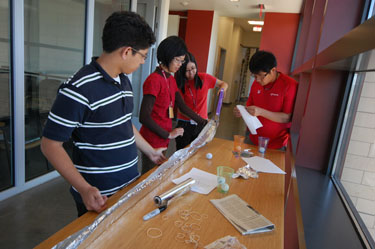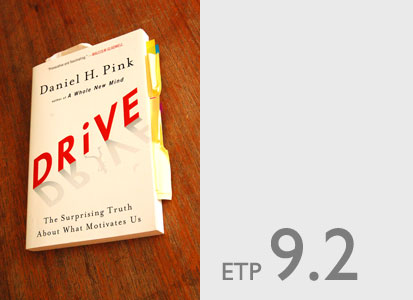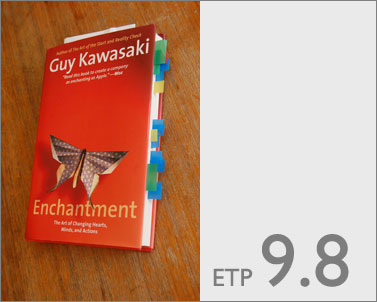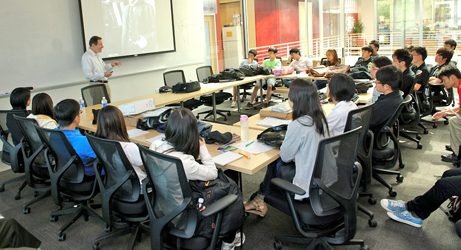
One of the products from this program will be lesson modules that can be applied in workshops as well as at alumni events (as follow-on sharing). I am not considering selling modules to 3rd parties since quality control and experience may be off-base.
The first module that I am working on is one which is based on the pocket guides developed by the SeafoodWatch program of the Monterey Bay Aquarium. I remember how this seemingly simple printed material had such an influential piece of sustainability knowledge contained within. It certainly promotes the desired human behavior and makes it easier to sustain the behavior.
I intend to introduce this module initially during my alumni visit to SP, and apply it to one or more of the Summer 2012 workshops. I think this module contains all the elements we desire to apply: knowledge, communication, persuasion, utility, access, competitive, scalable, directional, and not least of all, affordable to produce.
In a way, I have prototyped the experience by working on my own portable pocket guide and I have been carrying it around in my wallet for several months now, and even occasionally pulled it out to show people. As a prototype, such a card is a great conversation piece and a simple way to start introducing an idea.
For this module at the start, we will need materials and a way to design the layout (hand drawn/sketched or computer-generated?). One should probably then engage in a brief brainstorming/sandbox exercise to divergently think of possible topics. Then would come the prototype designs (including how to fold; the final product should be professionally printed). One should then carry around the prototype and perform focus group use to get feedback.
One could even practice how to get the topic that is on the card into a conversation to give oneself the guerrilla marketing edge and create the opportunity to pull out the card.
This has made me think about the Chinese language iPad app that Prof Leckie just showed me this week. What would be the competitive advantage/weakness of this wallet-fitting card? People still carry business cards, so card carrying doesn’t seem to be disappearing.
UPDATE: I recently went for a visit to Singapore Polytechnic – mainly to followup with students who attended the June 2011 workshop – and had the opportunity to test the exercise in quick-designing pocket guides such as those mentioned above. The group consisted of about 13 students of the forthcoming June 2012 group, and 9 students of the June 2011 group. I started by handing out the SeafoodWatch pocket guides as a reference point. Then I explained that the objective of the exercise was to design your own pocket guide. Each person in the group had 15 minutes to design a pocket guide, thinking up a topic, figuring out the folded layout and drawing on a piece of paper. 15 minutes is hardly enough to complete the pocket guide, and so after 15 minutes the work-in-progress was passed to another student – whose job was to finish off the card – which included figuring out the idea of the card and filling the rest of the content. After another 15 minutes, the pocket guide was passed to another student who was given 15 minutes to analyze the card and come up with a 15 second pitch (i.e., something to say about the card and interest a passer-by). SP staff took turns being the casual passer-by and each student took turns making their 15 second pitch. We made remarks about eye-contact, grabbing interest and covering the most relevant feature – within the 15 seconds which is about the time limit a stranger might allow – if all goes well. We made observations how our passer-by actors reacted to the pitch – with positive interaction (i.e., taking hold of the card) or disinterest (e.g., lost eye contact). This exercise demonstrated:
(a) how a small object (i.e., the pocket guide) can be used to advance an idea,
(b) seat-of-the-pants design keeps the overall theme simple enough to be able to collaborate with others (i.e., the second designer and the pitcher),
(c) that focus is critical when pitching an idea to a stranger,
(d) the process of extending an idea (second designer) also requires creativity,
(e) always have an idea (or a few) at the ready in case an opportunity arises suddenly.
Based on this experience, we could use this exercise for open house events as a way of showing how creativity, ideation, design, readiness and delivery have to come together. And when the delivery is “pitch-perfect” and shows personal commitment to the idea, leadership comes through.








